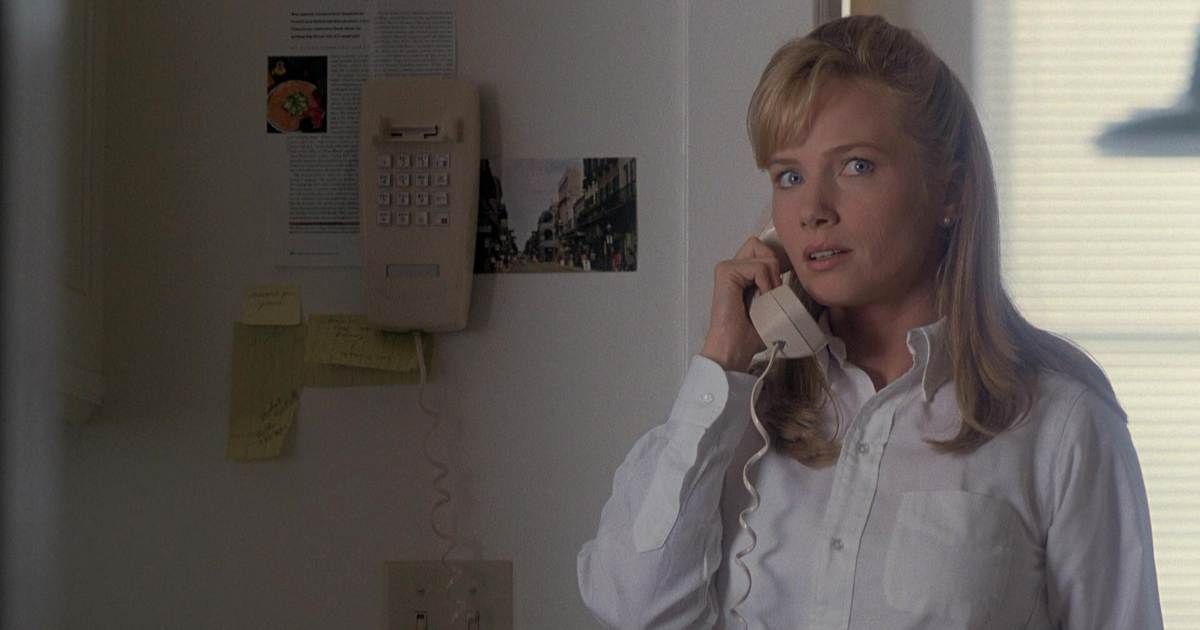In the world of cinema, iconic performances often leave a lasting impression on audiences, and sometimes, it's the raw, unfiltered moments of vulnerability that truly capture the essence of a character. Such is the case with the talented actress Rebecca De Mornay, who has graced our screens with her captivating presence and, on occasion, her fearless approach to portraying the human form in all its raw beauty.
The Art of Vulnerability: Rebecca De Mornay's Bold Choices

Rebecca De Mornay, born on August 29, 1959, in Santa Rosa, California, is a seasoned actress with a career spanning several decades. Her journey into the world of entertainment began with small roles in television shows and films before she landed her breakthrough role in the 1983 film Risky Business, opposite Tom Cruise.
But it was her role in the 1991 psychological thriller The Hand That Rocks the Cradle that truly showcased her versatility and willingness to push boundaries. In this film, De Mornay's character, Peyton Flanders, a nanny with a dark past, not only captivates the audience with her sinister demeanor but also leaves a lasting impression with a daring nude scene.
This moment of vulnerability, while shocking for some, was a calculated artistic choice by De Mornay and the filmmakers. It served to enhance the character's complexity, adding a layer of psychological depth that contributed to the film's critical and commercial success.
The Impact of De Mornay's Nude Scenes
The impact of De Mornay's nude scenes extends beyond the individual films. In an industry often criticized for its portrayal of women, De Mornay's choices challenge the status quo. By embracing her body and using it as a tool for storytelling, she empowers other women to feel comfortable in their own skin and to recognize the strength that lies in self-acceptance.
Furthermore, De Mornay's fearless approach to nudity has opened doors for other actresses, encouraging a shift towards a more inclusive and diverse representation of the human form on screen. It is a bold statement that challenges societal norms and encourages a more nuanced understanding of the female form.
| Film | Year | Notable Nude Scene |
|---|---|---|
| Risky Business | 1983 | The iconic scene where De Mornay's character, Lana, dances in her underwear to "Old Time Rock and Roll." |
| The Hand That Rocks the Cradle | 1991 | A pivotal moment where Peyton Flanders, in a vulnerable state, is seen nude, adding depth to her character's transformation. |
| Backdraft | 1991 | Although a brief glimpse, De Mornay's character, Helen Sefelt, is seen partially nude, reflecting her character's emotional state. |

The Evolution of De Mornay's Career and Impact

Rebecca De Mornay's career has been a testament to her versatility and unwavering commitment to her craft. Beyond her iconic nude scenes, she has proven her mettle in a diverse range of roles, from the mysterious and seductive Lana in Risky Business to the menacing yet vulnerable Peyton Flanders in The Hand That Rocks the Cradle.
Her performances have not only captivated audiences but have also inspired a generation of actresses to embrace their bodies and use them as powerful tools for storytelling. De Mornay's fearless approach to nudity has broken down barriers, challenging the traditional norms of what is acceptable on screen and paving the way for a more inclusive and representative portrayal of women in cinema.
The Future of Female Representation in Cinema
As we look towards the future, De Mornay's legacy continues to influence the evolving landscape of female representation in cinema. Her work serves as a reminder that the female form is not merely a commodity to be exploited but a powerful vehicle for expressing the depth and complexity of human emotion and experience.
Through her fearless choices, De Mornay has not only left an indelible mark on the industry but has also empowered countless women to embrace their own stories and share them with the world, unapologetically and without restraint.
Why did Rebecca De Mornay choose to perform nude scenes?
+De Mornay’s decision to perform nude scenes was a conscious artistic choice aimed at enhancing the depth and complexity of her characters. It allowed her to explore the vulnerabilities and raw emotions of her roles, adding a layer of realism and psychological depth to her performances.
What impact has De Mornay’s work had on the portrayal of women in cinema?
+De Mornay’s fearless approach to nudity has challenged traditional norms and encouraged a more inclusive and diverse representation of women on screen. Her work has inspired a shift towards embracing the female form as a powerful storytelling tool, rather than a mere object of desire.
How has De Mornay’s career evolved beyond her iconic nude scenes?
+While De Mornay’s nude scenes have left a lasting impression, her career has evolved to showcase her versatility and range as an actress. She has taken on a variety of roles, from sinister villains to complex, multi-faceted characters, solidifying her place as a respected and influential figure in the entertainment industry.